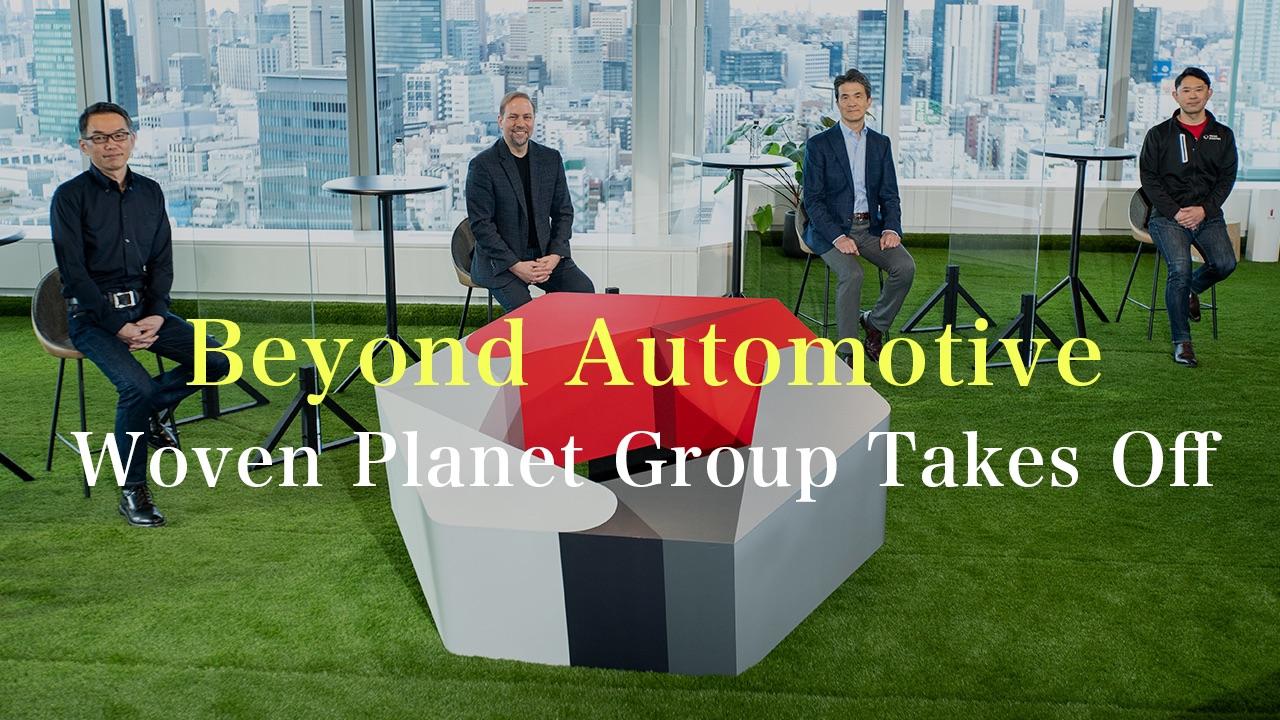
Many people have heard about Woven City, which is planned to break ground on February 23rd, but what about Woven Planet Group? Read on to learn more about the new Woven companies and the focus of each of them.

In January 2021, Toyota Research Institute-Advanced Development (TRI-AD) reached a new milestone in officially re-organizing into the holding company, Woven Planet Holdings. Within the holding company, Woven Planet consists of three operating companies—Woven Core, Woven Alpha, and Woven Capital. The companies continue to be responsible for developing advanced technologies such as automated driving, and are responsible for the Woven City project scheduled to begin construction on February 23rd (Mt. Fuji Day).
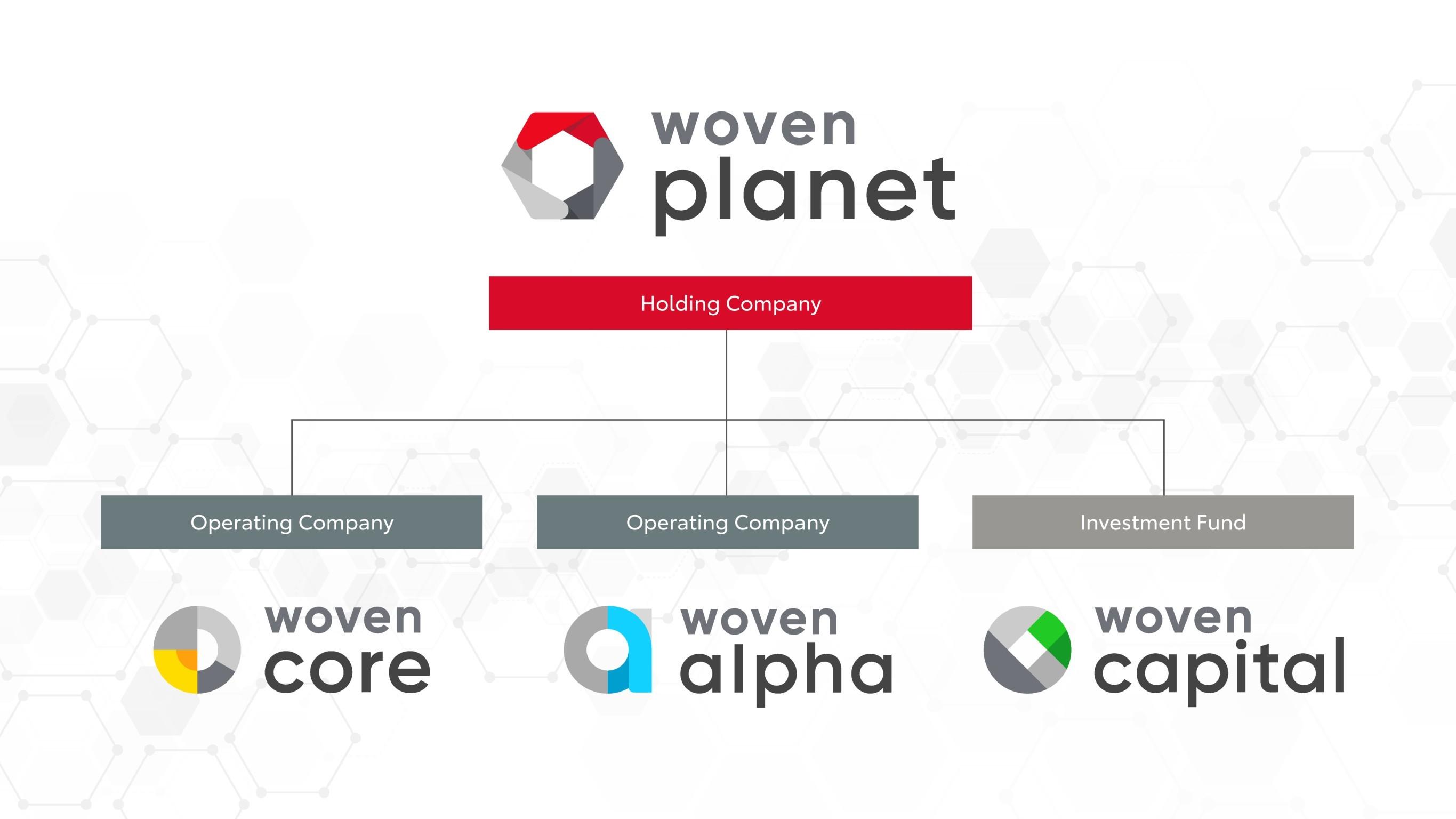
At an opening event held on January 29th, the heads of the Woven companies talked about the vision and role of each business.
The event was followed by a Q&A session, in which each company leader answered questions from his unique perspective, giving more clarity into the role each company plays within the Woven Planet family.
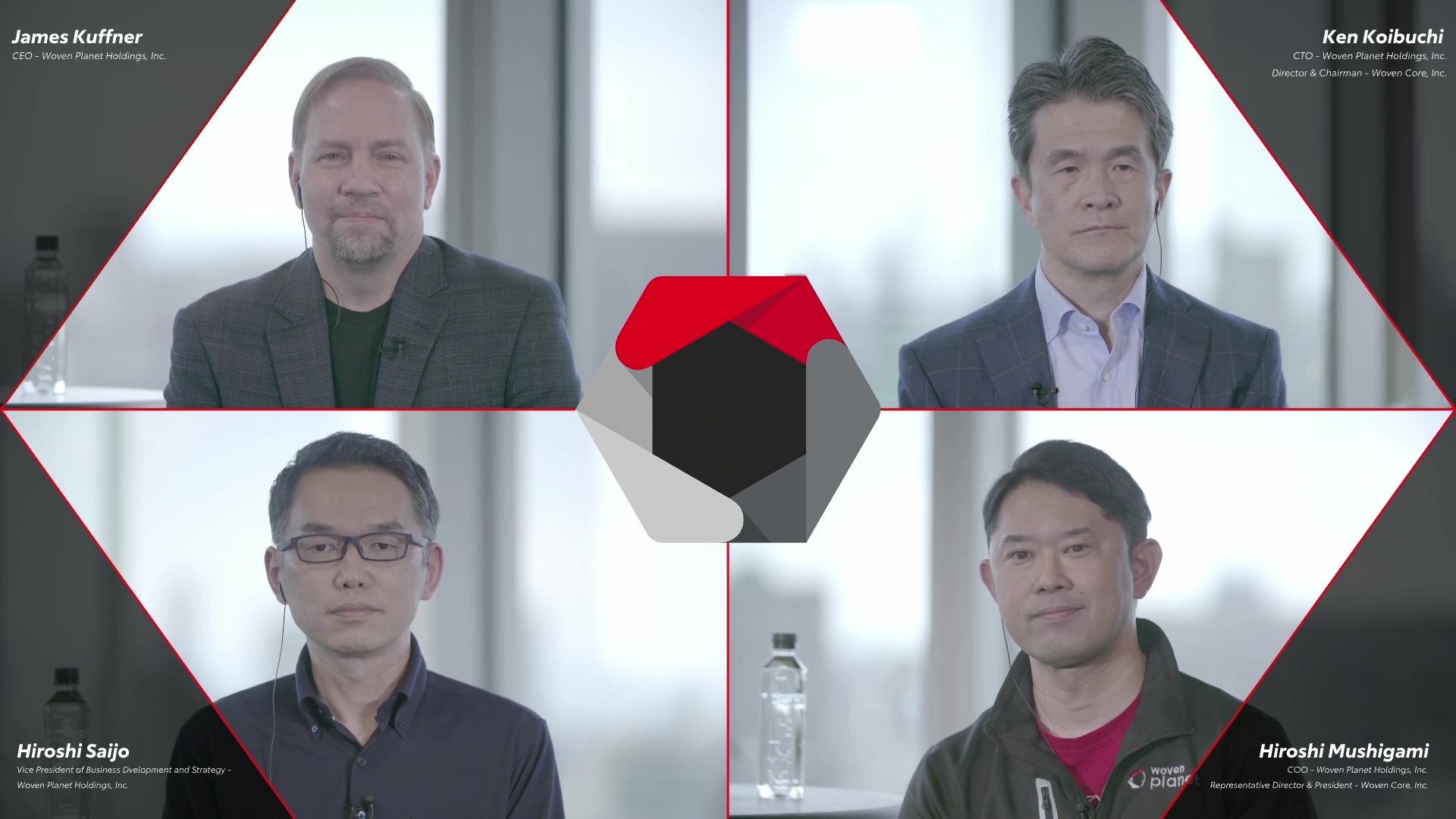
In revisiting the opening event’s Q&A, Toyota Times breaks down the significance of TRI-AD’s reorganization into the new Woven companies and shares thoughts from Woven Planet Holdings CEO, James Kuffner on key projects such as Arene, the vehicle software platform, and Woven City.
Why this transformation?
—Why is the word “woven” included in the name of each of the new companies? What will change within each entity following this transition?
CEO James Kuffner
I think going forward, we are witnessing a tremendous amount of change, disruption and transformation of traditional mobility, and Woven Planet’s expansion from TRI-AD at its roots represents a growth of our investment and broadening of our scope, especially when we think about projects like Woven City.

The former organization, TRI-AD, which had focused on developing automated driving, is now trying its hand at town development. CEO James Kuffner looked back on Toyota’s history as he explained the evolution of business scope for Woven Planet.
CEO James Kuffner
The history of Toyota goes back to a loom. Sakichi Toyoda invented an amazing loom to help his mother so that she could weave cloth more efficiently and [he could] bring her happiness. I think that idea of “doing things for others” is the spirit and heart of Toyota.
Woven Planet weaves the same Toyota legacy into its spirit. In founding Toyota Motor Corporation, Kiichiro Toyoda brought cars not just to Japan but to the world, and Toyota became a global leader in technology, innovation, and safe mobility.
With the growth of software and new technology, and with Woven City trying to bring all those pieces together, I sincerely hope that the Woven Planet Group can become a strong leader in forging a new future for everyone. We aim to be a mass producer of happiness, as President Akio Toyoda has said.
CEO James Kuffner also summarized the aim of the organizational restructuring.
CEO James Kuffner
For Woven Planet Group, our company reorganization gives us flexibility to think beyond the traditional car business and how we can create new value and new businesses. Our structure is going to allow us to do that.
That’s one important part of the transformation that will allow us to lay a strong foundation for growth. And again, as we said, it’s very difficult to grow, while also maintaining the speed, focus, and agility of smaller companies.
We’re utilizing the advantages of this structure to try and maintain that. We’ll deliver great value faster through wonderful products, keeping our focus while expanding our scope.
In the reorganization of TRI-AD, “Toyota” was removed from the company name. However, the word “woven”, which draws inspiration from the invention of the automatic loom by the company that went on to become Toyota, expresses a determination to carry forth Toyota’s spirit and to produce happiness for all.
Following James Kuffner, the leaders of each company shared their perspectives on the reorganization.
Hiroshi Saijo, Woven Planet Holdings Vice President in charge of business development and strategy commented as follows.
VP Hiroshi Saijo
Since its establishment in 2018, TRI-AD has created advanced software for the automobile industry purely as a development company, but as of last year, the idea of “beyond automotive” (such as with Woven City) has also come into play for the organization. In this way, it’s necessary to have mechanisms to incubate and grow flexible ideas that have never been done before.
It’s also crucial to achieve both overall optimization and individual optimization. We need to dynamically manage both the vertical and horizontal threads to achieve these goals.
The company structure of Woven Planet can do just that. Woven Planet Holdings will create a medium- to long-term business strategy for the Woven Planet Group, and each operating company will run at the fastest speed for the mission at hand. I think we have created a structure and mechanisms that balance these goals well.
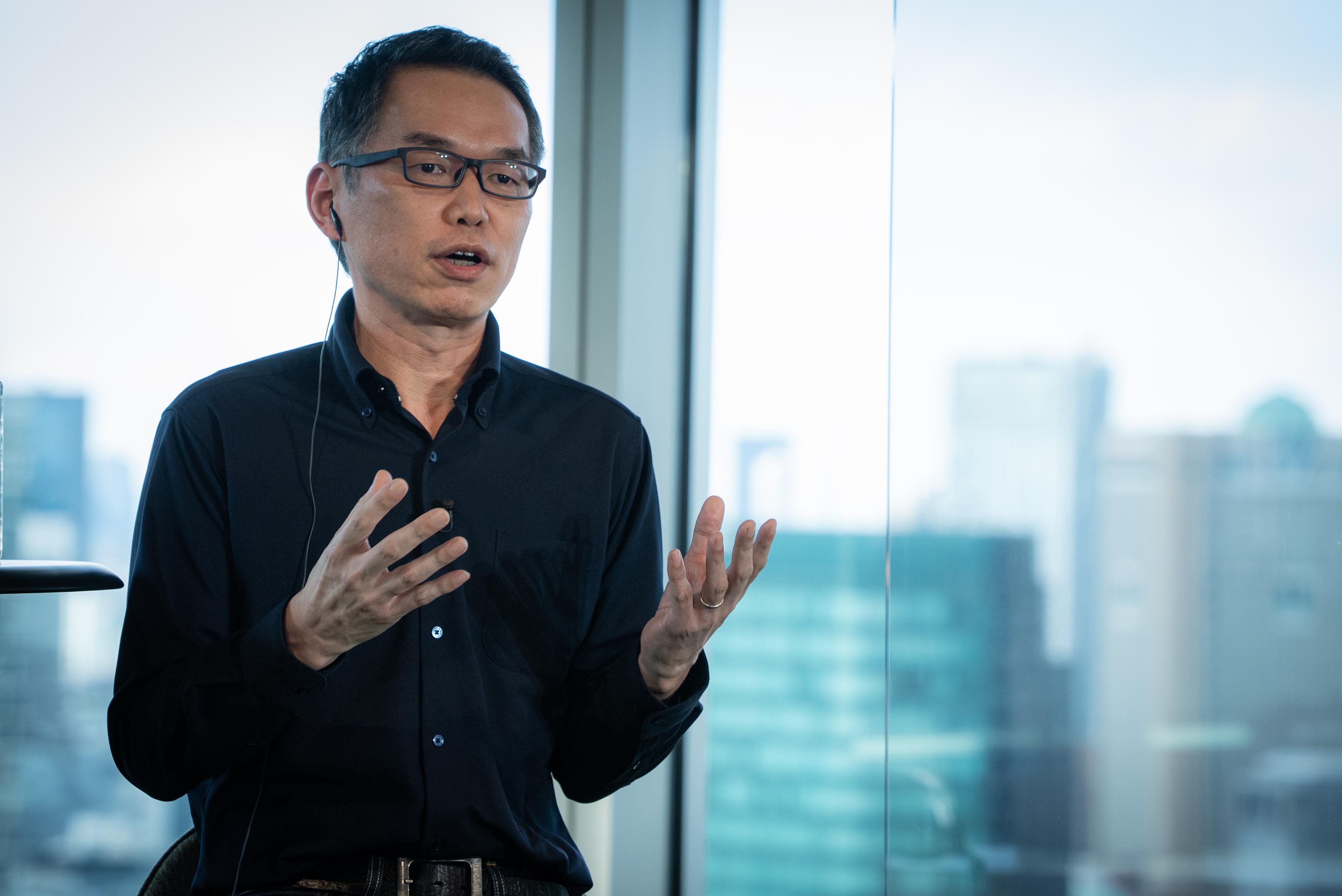
One of these mechanisms is Woven Capital, a global investment fund newly established along with Woven Core and Woven Alpha.
Woven Capital will strategically invest in a wide range of partners in the areas of advanced technologies and services related to mobility and robotics, such as autonomous driving, artificial intelligence, machine learning, data analytics, connectivity, and smart cities.
Woven Capital will enable the organization to work alongside others with innovative ideas and technologies from around the world, beyond the sole power of the Woven Planet Group. This will also accelerate efforts to achieve the group’s vision of “Mobility to Love, Safety to Live”.
In-house vs. collaborative efforts
Another reporter asked a question about Toyota’s insistence on in-house development of automated-driving software.
“In-house” here refers to Toyota conducting full technological development within the Toyota Group or among affiliated companies.
Woven Core is leading automated driving development in the Woven Planet Group. Two leaders of the company explained Toyota’s in-house approach, and, in doing so, shed light on the thinking that led to TRI-AD’s reorganization.
—Why doesn’t Toyota seek collaboration with other companies?
Woven Core President Hiroshi Mushigami
You mentioned automobile companies and technology companies working together on autonomous driving. When you think about why that is, we say it’s because developing mobility becomes a very large-scale endeavor that cannot be handled by one company alone.
You also need to combine good hardware with good software. Toyota has the strength of hardware that’s been cultivated over many years.
James (Kuffner) says that we need to realize the Toyota Production System (TPS) in our software development. I think that by creating platforms, such as software development and tools, we can secure the strengths of software in-house as well as those of hardware through Toyota. This strategy allows us to utilize our in-house production for software.

Woven Core Chairman Ken Koibuchi
If you try to handle all the areas of automated driving on your own, you will slow down. So, we decided that we would handle what we want to own and should continue to own as core technologies.
The added value of software in vehicles is rapidly increasing, and I believe we should handle this part on our own.
On the other hand, there are some areas we can accelerate by partnering with others.
We have to be able to complete development, to a certain degree, to make software our core competence and to speed up its process in the future.

In using these aforementioned strengths, Woven’s goal is to accelerate by strategically separating development completed in-house and development done in collaboration with partners.
At the opening event, it was announced that Teammate, Toyota’s latest advanced driving assist technologies, will be launched in-market this year.
A plan to reveal a fully autonomous prototype vehicle was also explained. The vehicle is currently undergoing verification testing in Tokyo, aiming to provide autonomous driving services on general roads.
Construction of Woven City is also about to begin. It’s clear why aligning on the organizational structure was core to Woven Planet, as 2021 will be a year of big developments.
What is Arene?
During the Q&A, CEO James Kuffner often spoke about the company’s software platform “Arene”. However, the concept behind Arene is rather difficult to understand.
A reporter asked: “What does Arene do? Could you try to explain it to a non-software guy like me?”
CEO James Kuffner
A good analogy is something like Windows for personal computers. The great thing about Microsoft Windows, the most profitable piece of software that humans have ever built, is that it had a hardware abstraction layer.
It was able to allow people to upgrade memory storage peripherals on their computing device independently of the software, and it allowed them to install new software that runs on older hardware.
That independence provided tremendous value. It’s the same kind of value that was created when we have something like iOS or Android, and Android provides a platform that runs on many different kinds of hardware, but it also provides an excellent development environment for tools and testing. That is what has been missing so far [in the automotive field], and that’s what I believe we can contribute.
Kuffner was one of the founding members of Google and had been around when autonomous driving development was still being done in secret. He later headed Google’s robotics division.
Kuffner then talked about the idea of Arene, using his own experience as an engineer as an example.
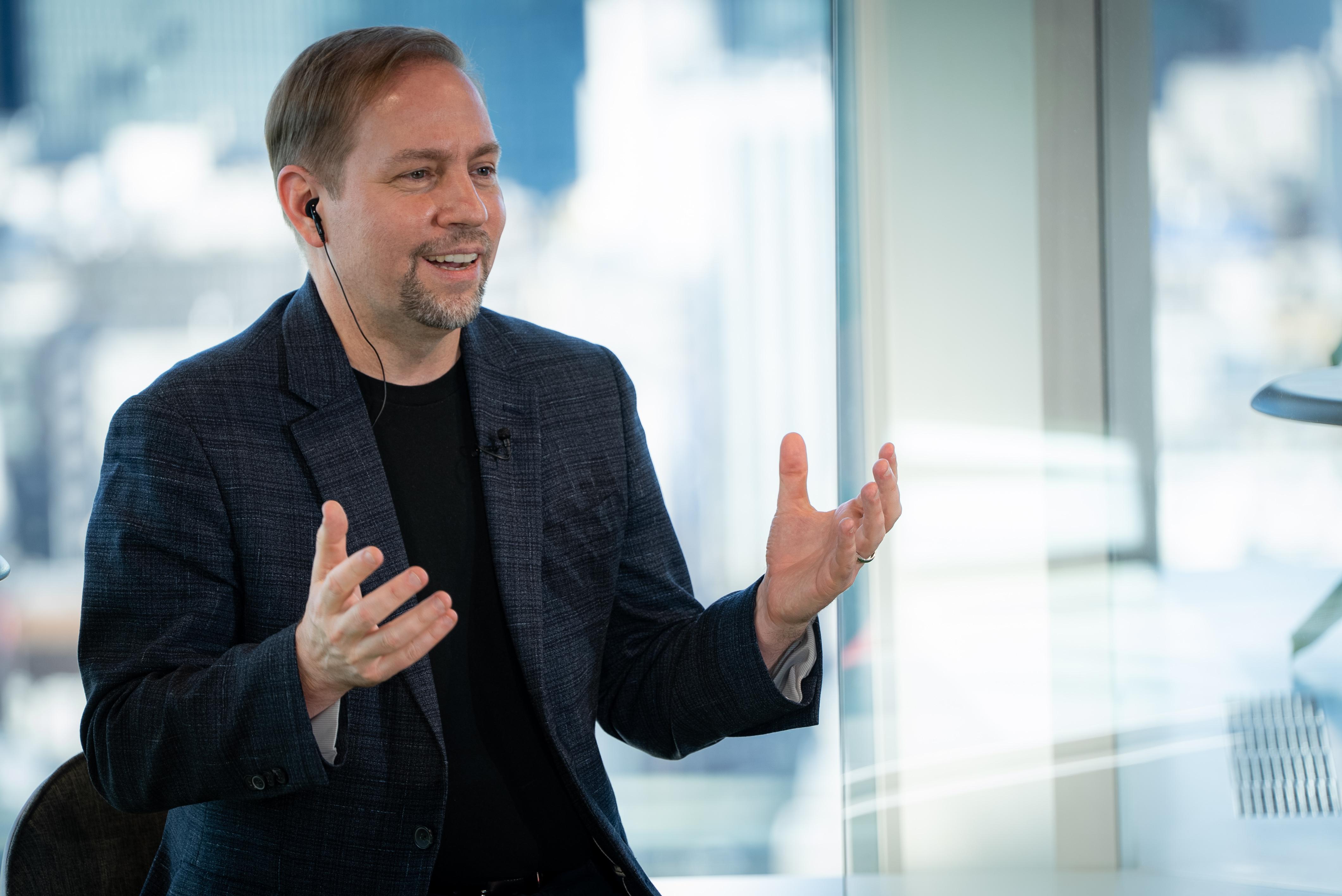
CEO James Kuffner
I’ve learned from 20 years of working in Silicon Valley about how to design a good, scalable architecture. There are going to be many competitors and there are many different designs in software engineering.
But the reality is a well-designed piece of software, including its architecture, has scalability, has flexibility, and that’s what we’re trying to achieve with Arene. Something new, something modern, something scalable.
When we think about developing something like automated driving software, it turns out that only 10 percent of the software that you need for automated driving runs on the car, and the other 90 percent is all tools: the things you need to build like machine learning systems to process data to build, deploy, and review code and, over the years, update software, log analysis, and create simulations.
So, in all of the software that you actually need to develop, 90 percent is off-board or running in the cloud.
That is actually what we’re creating with a complete ecosystem and environment and with a very stable, well-designed, well architected runtime. There will be many choices. That’s a good thing. It’s competition, it’s innovation in the marketplace. I hope that Arene and Woven Planet Group will be a true leader in building the best, safest mobility ecosystem with quality software and modern tools.
The story also extends to the possibilities that Arene enables.
CEO James Kuffner
It's no secret that a lot of automated driving companies use Toyota and Lexus cars in their development.
Ten years ago, when I was part of Google, we used the Toyota Prius because the hybrid synergy drive was just a perfect development platform. You can attach all kinds of sensors to it. If the voltage level drops, the gas engine powers up and keeps everything charged and fully operational. You can refuel it in five minutes. That ongoing, 24/7 development has been a platform for enabling automated driving technology and new applications and services.
But at that time, it was hard to program. It was hard to program a Toyota car.
Through Arene, we are essentially solving that problem. It makes it easy to program safely, and that means many other companies will be able to program using our Arene APIs (application programming interfaces) and leverage the fact that we have a reliable and low total cost of ownership. It is an energy efficient platform for mobility.
That is also how we’re looking to test and expand our products and services, deploying them in real-world environments like Woven City.
Simply put, Arene is a vehicle OS. With Arene, the programmable area will expand from privately owned cars (automotive) to mobility services (beyond automotive) that inter-connect smart cities and smart home environments in the future.
And in sharing the Arene platform, members of the Woven Planet Group and developers all over the world will be able to participate in developing the program alike.
Arene is a key project that can help Woven Planet bring happiness to customers everywhere. Woven Planet Group intends to further develop and test these innovations in the realistic environment of Woven City.
The technology marks an important shift from automotive to beyond automotive, and from the Woven Planet Group to partners all over the world.
Thoughts on Woven City
At a press conference for Toyota’s mid-year financial results in November 2020, Akio Toyoda announced that construction for Woven City will start on February 23rd, adding that the city will have 360 residents, including the elderly, families with small children, and inventors.
Information was provided about the idea of cooperation with inventors and partners, who will play a critical role in the city’s development.
Kuffner was asked, “What are your thoughts on the areas of cooperation and competition in Woven City?”
CEO James Kuffner
Woven City is really focused on how we can create value for people in how they live, work, learn, interact, communicate, and move in the future.
With regard to partnerships, we know that we don’t have all of the technology for creating that new future of smart mobility in-house. We need to reach out and work with people who have great ideas.
It’s really meant to be a place where innovators and inventors can come and develop and test these new technologies together with us and hopefully create new value.
After Akio Toyoda announced the Woven City project just about a year ago, we’ve had over 3,000 contacts from businesses, inventors, innovators, and people interested in the project.
We see a tremendous outpouring of support. One of the exciting things is that if we’re driven by how we can maximize happiness and value to people, then it becomes a shared vision. We have a shared mission and a shared goal with our partners.
Together, those partners will help to create these new technologies, products, and services, which again, are not meant to be just for one place. It’s really to develop them, to test them quickly, to refine them, and to truly make them global.
I would absolutely love for smart cities around the world to have technology, products and services that were developed in Woven City because it’s meant to build happiness for the world and not just Shizuoka.
Akio commented on the thinking behind partnerships when asked by Toyota Times Editor-in-Chief Teruyuki Kagawa back in 2019.
Akio Toyoda
I think there are things Toyota can do because it is Toyota. But Toyota cannot do everything alone. Therefore, we say, “To all of you around the world, why don’t you join us?” and “Gather ’round!” I would like to put the future in motion together, with all of those who come on board.
The Woven City project was announced soon after Akio commented. His passion has been clear in the Woven City efforts.
Although he was not present at the Q&A, Woven Planet Holdings Senior Vice President (SVP) Daisuke Toyoda commented on the objectives of the Woven City project.
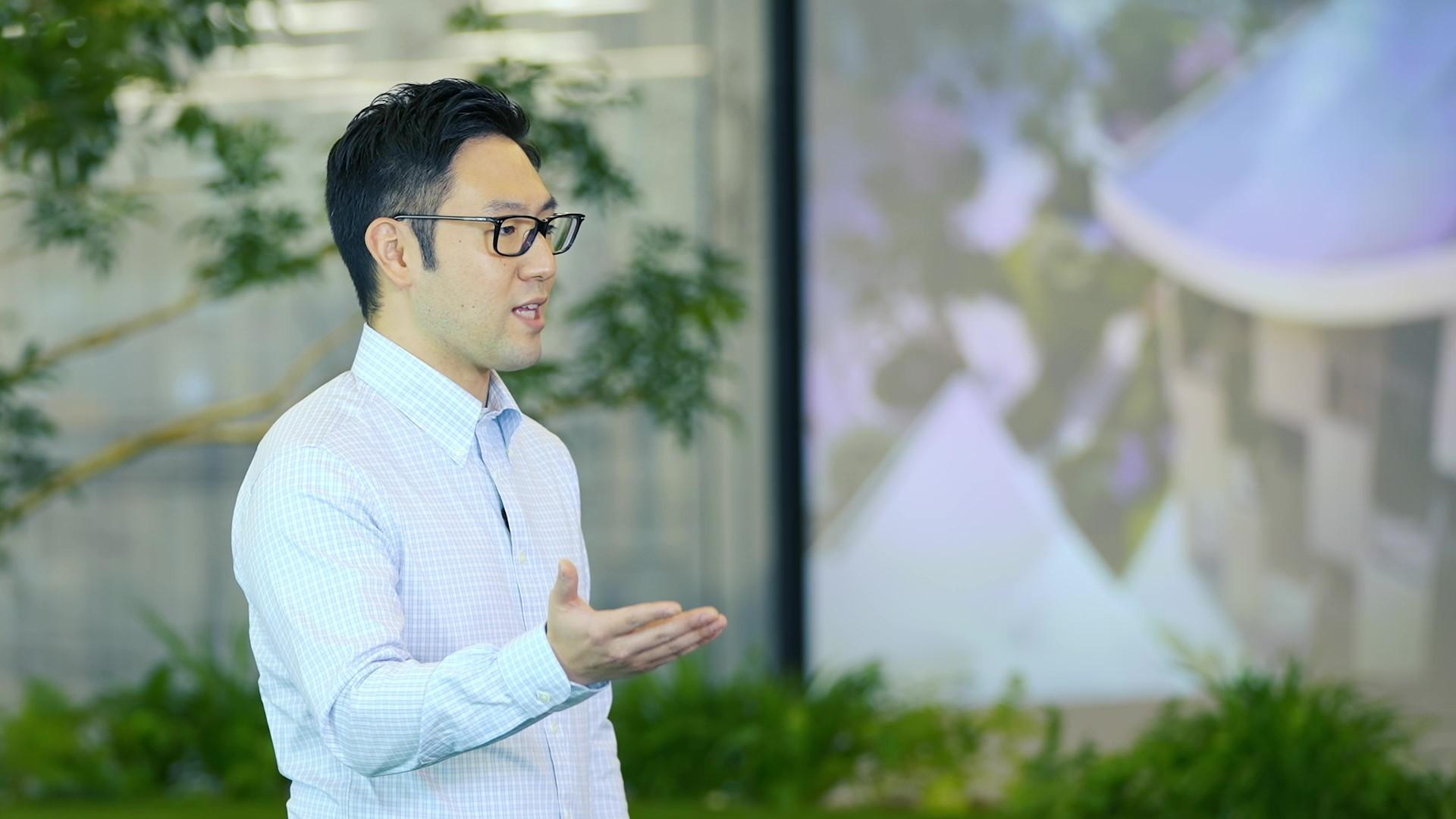
Daisuke Toyoda
Everyone’s preference differs. While the main ingredients are the same, it is important that we consider our differences. We must continue to pivot, change, and evolve in order to create a satisfying taste for all.
It is with this same ethos that we are developing Woven City. What has been most important is imagining each person’s unique lifestyle and applying a human-centered approach in our creation process.
We think about what is needed from each person’s perspective, and craft new ways to make their happiness a reality. In working together with partners who share the same mission, we seek to build a city that mass-produces happiness.
Woven City will be developed together with the people and partners who live there. It is a challenge to understand and meet people’s different needs, based on what happiness means to each of them.
The Woven City project may have seemed like a dream when Akio spoke at CES in Las Vegas about a year ago, but it is now a reality that is soon to break ground.

